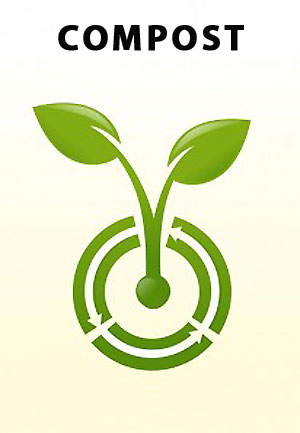|
|
Both urban communities and agriculture are also being challenged to implement ‘zero waste’ principals that include environmentally and socially acceptable recycling of their wastes. This project therefore explores the potential for utilising organic wastes to the benefit of both agriculture and the wider community. The research and development program involved fertiliser replacement, production system evaluation and commercial demonstration sites. One of the most important findings has been the ability of compost to increase the supply of plant available nitrogen and potentially reduce the need for large amounts of inorganic nitrogen fertiliser. Compost also contains useful quantities of plant available phosphorus, potassium and magnesium and the nitrogen it contains is retained in the soil and is available for use in future crops. The aim of this project was to identify the benefits of using compost in vegetable production on light and heavy soils, and to develop and promote awareness of the requirements of vegetable production amongst the compost industry and the waste management industry.
Introduction : It is increasingly acknowledged that soil organic matter is capable of making a significant contribution to the nitrogen requirements of vegetables and that for this to become a reality, more emphasis on building soil organic matter levels is necessary. Composting is an essential step in the process of building and maintaining soil organic matter levels because it provides a mechanism for managing risks of introducing disease, weeds and pests as well as other contaminants that are inevitably associated with organic wastes. The composting process typically requires blending of different feedstocks for best process management and this also provides opportunity to manage heavy metal and other contaminants by dilution as well as mechanical means. Organic materials typically comprise 50 to 60% of the total waste stream and their impact on greenhouse gas production, mainly methane and groundwater pollution emerged as major concerns. Recently the national consulting company, Noland ITU released a statement that the annual environmental cost of landfill associated with major Australian cities is an estimated $670m and that this is over twice their estimate of the National cost of salinity. Outcomes from these concerns have resulted in various landfill reduction targets (in Western Australia a 50% reduction by 2000 was set) and from the outset, agriculture was recognised as a major potential market for the organic waste component. Recycling organic waste to build soil organic matter has the potential to improve agricultural production and soil performance, to address organic waste management issues, and to better manage environmental and social concerns associated with agriculture.
Conclusions : Fertiliser savings, moderate to small increases in marketable yield, irrigation savings along with other potential benefits to production efficiency and improved environmental outcomes combine to make compelling arguments for the use of compost to contribute to a more productive vegetable industry. Consistently achieving increased returns from using compost, at least in the short term, will require adjustments to fertiliser applications. The need to adjust fertiliser programs, to store and spread compost, and the perceived risks associated with the capital outlay ($800 to $1,000/ha) required to apply compost at the commencement of the crop cycle, explains the relatively slow adoption of compost use and emphasises the need for:
In addition to direct benefits to productivity and grower returns, our work demonstrates the critical importance of a greater:
This approach will minimise potential negative management impacts on soil and water quality while minimising costs of fertiliser, irrigation and ultimately pesticide costs. Without incentives, the adoption of these approaches based on the use of compost and adjustments to management, even when fully developed, will be slow because the benefits tend to be long term and accumulative rather than short term and immediate. The development and adoption of ‘soil carbon based’ practices will be encouraged by:
See Also : “COMPOST PRODUCTION AND USE IN HORTICULTURE” Acknowledgements : Special thanks also go to my colleagues at the Department, numerous growers who have allowed us to interfere with their tight schedules also deserve recognition and particularly Sam and the Calameri clan at Balpis Market Gardens, who have and continue to support our efforts in this exciting area of work. In addition to my colleagues and associates in the recycled organics industry, there are a number of people in various Government and non Government organisations that have also contributed to developing the knowledge of the potential that recycled organic products offer to the future of agriculture and particularly horticulture. My colleagues both nationally and internationally and I would specifically mention Johannes Biala from Queensland, Angus Campbell and in the early years, Peter Faye who is sadly deceased, Eric Love and Chris Rochford from NSW, Kevin Wilkinson and his staff at the Department of Primary Industries, Knoxfield in Victoria, Katie Webster and John Buckerfield who is also sadly deceased, from South Australia, Lyn Abbott from the University of WA, Harrie Hofstede and lastly but certainly not least, my immediate colleague and associate, Peter O’Malley. Special mention is also due to all of the people that I have met at conferences and meetings here in Australia and in the United States and specifically to mention my friends and colleagues in the composting industry, Tony Scherer, formerly from Gingin via California and now residing in Tasmania, Andy Gulliver, Steven David and Bill Gifford, Peter Wadewitz from South Australia, and other associates and unwitting mentors from further a field that include Harrie Hoitink, Matt Cotton, Mark Buchanan, Luis Diaz, Ed Stentiford and most recently, Ron Alexander. Finally in writing this paper, I must acknowledge the support and encouragement that I have received from the recently formed ROWA group and the ‘Standards for the application of organic materials to land’ working group and specifically the direct editorial inputs from Martin Gravett, Andy Gulliver, Carolyn Jakobsen and Giles Perryman. This project was funded by WA Department of Agriculture, the Waste Management Board of WA, The Australian Government provides matched funding for all HAL’s R&D activities. |
||||||
|


